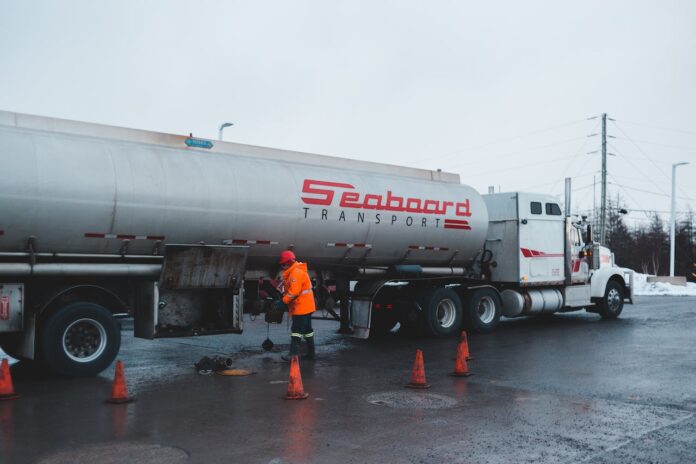
The evolution of truck water tanks is a fascinating story that uncovers the journey of not just an invention, but also reflects the progression of technology, regulations, and environmental consciousness. Intricate designs, varied materials, advancing technology and complexities of hauling water on wheels shaped its history. Now walk along this riveting path tracing the evolution of truck water tanks.
Origins of Water Haulage
In the days of old, transporting water over long distances was an extremely difficult endeavour. People relied on animal-powered carts and wagons to deliver the precious resource to cities situated far from viable water sources. The advent of steam power during the Industrial Revolution in the 18th century brought more efficient means of hauling water, drastically improving upon manual labour.
However, these early advances were merely first steps toward the transformations future technological leaps would enable. The precursors to modern truck tanks were basic horse-drawn barrels and cisterns for containing quantities of water.
Early Truck Water Tanks
With motor vehicles becoming more widely available and dependable in the early 20th century, they started to replace horse-drawn carts for transporting goods of all kinds, water included. The first primitive iterations of truck water tanks amounted to little more than fitting barrels or cisterns onto flatbed trucks. Design was straightforward rather than innovative, with pure functionality taking precedence over form. Securing barrels firmly to avoid spillage during transit presented immense challenges.
The Post-War Boom
Post World War II marked a major turning point in truck tank design. Manufacturing industries boomed, leading to an increase in urbanisation and subsequently a greater need for water transportation.
The high demand sparked innovation in the design and production of truck water tanks. More sophisticated designs emerged, such as cylindrical tanks that maximised space and reduced spillage. The focus was not just on capacity, but also durability to handle long-distance transportation across varied terrains.
Truck Water Tanks Material
The earliest tanks were metal affairs – steel or iron. Though strong, they succumbed to rust and corrosion over time, risking water contamination.
Seeking solutions, manufacturers tested an array of materials. Stainless steel gained favour thanks to its resistance to rusting and corrosion. Gradually, durable, lightweight plastic started gaining acceptance as well.
Influence of Technology
The invention of welding technology in the mid-20th century revolutionised truck tank manufacturing. This new technology enabled manufacturers to build robust tanks with higher capacity and better leakage prevention.
This innovation was further propelled by the advancement in pump technology. Pump design greatly influenced how quickly a tank could be filled or emptied, improving efficiency vastly.
Pioneers of Design
Innovation in truck water tank designs was largely steered by trailblazing companies who dared to deviate from traditional methods. They implemented new techniques like rotational moulding to create seamless tanks that were robust yet lightweight.
These pioneers also introduced polyethylene in tank construction due to it being highly durable and resistant to environmental impact. The innovations led to more versatile tanks suitable for different applications including firefighting and liquid fertiliser transportation. You can read more about it here.
Introduction of Regulations
As the truck tank sector matured, health and safety became pressing priorities. New government regulations arose dictating materials, manufacturing methods and tank construction to minimise contamination and secure water integrity during transport.
Rules also considered road infrastructure and driving conditions, capping tank dimensions and weight. While challenging manufacturers to innovate within constraints, these regulations brought discipline and oversight to the industry.
Growth in Australia
Despite being a late entrant, Australia’s trucking industry expanded rapidly. With wide expanses of harsh landscapes requiring fresh water supplies, truck water tanks have become vital.
Australian companies quickly adopted global innovations, incorporating the best practices in local manufacturing processes. Today they are considered leaders in producing high-quality, durable and efficient truck water tanks designed for tough Australian conditions.
Plastic Water Tanks Emergence
Plastic’s ascent as the dominant truck tank material constitutes a major industrial shift. Boasting lower manufacturing costs, featherlight weight and corrosion resistance, plastic prevailed on a global scale.
Rotational moulding of polyethylene produces seamless, leakage-proof tanks cost effectively. An added plus, plastic simplifies recycling, scoring sustainability points.
Impact of Environmental Concerns
The heightened awareness towards environmental sustainability has significantly influenced the truck tank industry. The demand for tanks built with sustainable practices and materials has increased drastically.
This has led to new trends such as reusable water systems on trucks and increasing use of recycled plastic materials in tank manufacturing. Incorporation of solar-powered pumps to reduce carbon emissions is being widely observed too.
Trucks to Mobile Cisterns
In recent times, truck water tanks have morphed into versatile mobile cisterns supplying vital water access lacking permanent infrastructure, especially in emergencies or remote locales. State-of-the-art pumping/delivery systems ensure safe transfer to end users.
Centrally monitored sensors and GPS integration enable real-time supply tracking, transforming capabilities.
Evolution of Tank Design
Tank shape and function have progressed enormously over time. The focus now falls on optimising capacity and aerodynamics while minimising weight to boost fuel savings.
The classic cylindrical profile has given way to more ergonomic contours evenly distributing mass to avoid suspension stress.
The Role of Manufacturing Process
Sophisticated manufacturing techniques like rotational moulding and resin injection enable mass production of extremely durable, leak-resistant polyethylene truck tanks. Stringent quality control using infrared imaging detects microscopic flaws during production for proactive prevention of road failures. Just as fixing home plumbing leaks early prevents extensive damage, identifying potential tank weaknesses is vital for maintaining purity over long, demanding operating conditions.
Advancements in Durability
The quest to extend tank lifetimes has spawned durability upgrades like UV/chemical resistance while handling pressure and temperature fluctuations.
Impact-resistant materials also better absorb blows from debris or handling, protecting structural integrity.
Transportation and Logistics Challenges
Transportation logistics pose a significant challenge for the truck water tank industry. The varying terrain and road infrastructure require constant alterations in tank design and size.
Added complexity comes from regional regulations pertaining to weight limits and dimensions, requiring manufacturers like the Water Tank Factory to produce customised solutions for different regions.
Tank Capacity Maximisation
Manufacturers are consistently pushing the envelope for tank capacity maximisation. Incorporating clever design elements such as recesses or even using flexible bag-like designs inside rigid structures have significantly increased water holding capacities.
The focus on reducing unnecessary weight implies not just on materials used, but also the superfluous fittings and attachments adding load to the tanks.
Trends in Truck-Based Systems
New trends embracing IoT and AI technologies are signalling the next evolution in truck tank systems. Remote monitoring of tank levels, predictability of refill needs based on water usage patterns are some advancements introduced.
You would see integrated systems on some trucks that treat water onsite before storage, ensuring quality at point of delivery – all pointing towards a future where efficiency is king.
The Future of Truck Tanks
The quest for designing the most efficient, durable, and environment-friendly truck water tanks will continue to drive innovations in the industry. You can expect to see more use of renewable energy sources, introduction of smart tanks with self-monitoring capabilities and continued push for regulatory compliance globally.
Autonomous transportation could be a reality soon with self-driving truck water tankers having pre-set delivery routes based on AI predictions. sky is clearly not a limit when it comes to evolution of these essential mobile cisterns!
Wrapping it Up
The journey of truck water tanks is an intriguing tale of ingenuity, adapting technology, embracing regulations and growth of environmental awareness. This necessity driven invention will keep evolving and catering to global demands in a more innovative and efficient manner. As remote corners transform into accessible roads, these mobile life-lines will be in forefront, satiating the thirst of man and machine alike.
Help keep news FREE for our readers
Supporting your local community newspaper/online news outlet is crucial now more than ever. If you believe in independent journalism, then consider making a valuable contribution by making a one-time or monthly donation. We operate in rural areas where providing unbiased news can be challenging. Read More About Supporting The West Wales Chronicle























